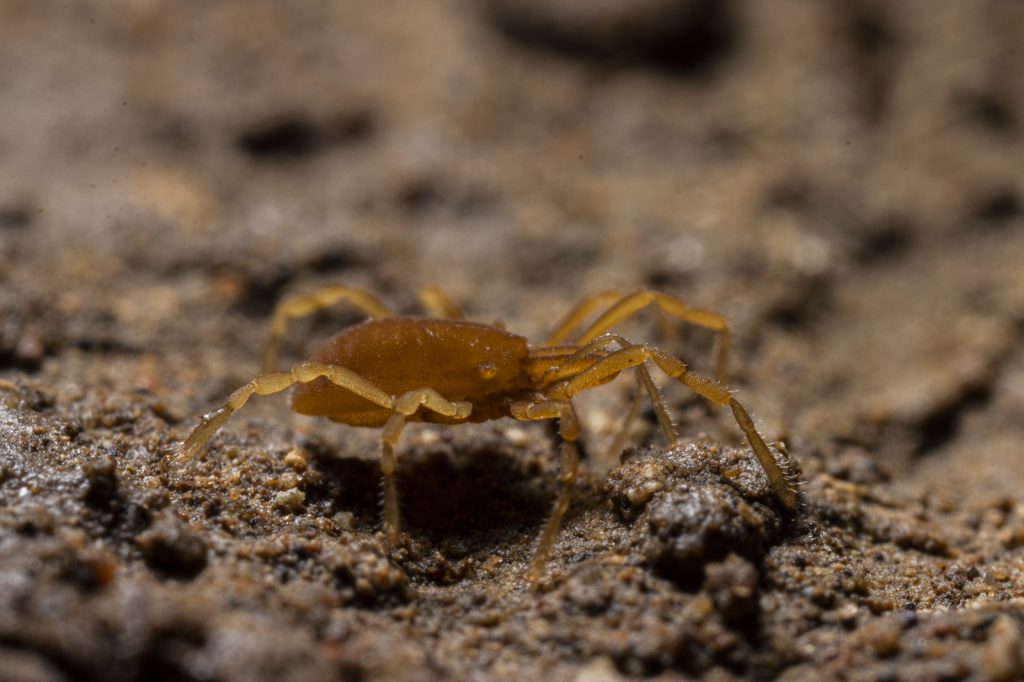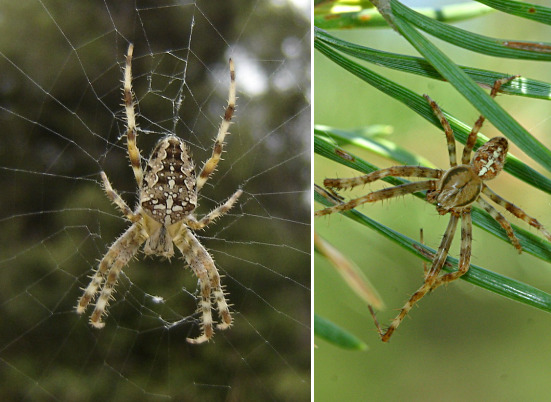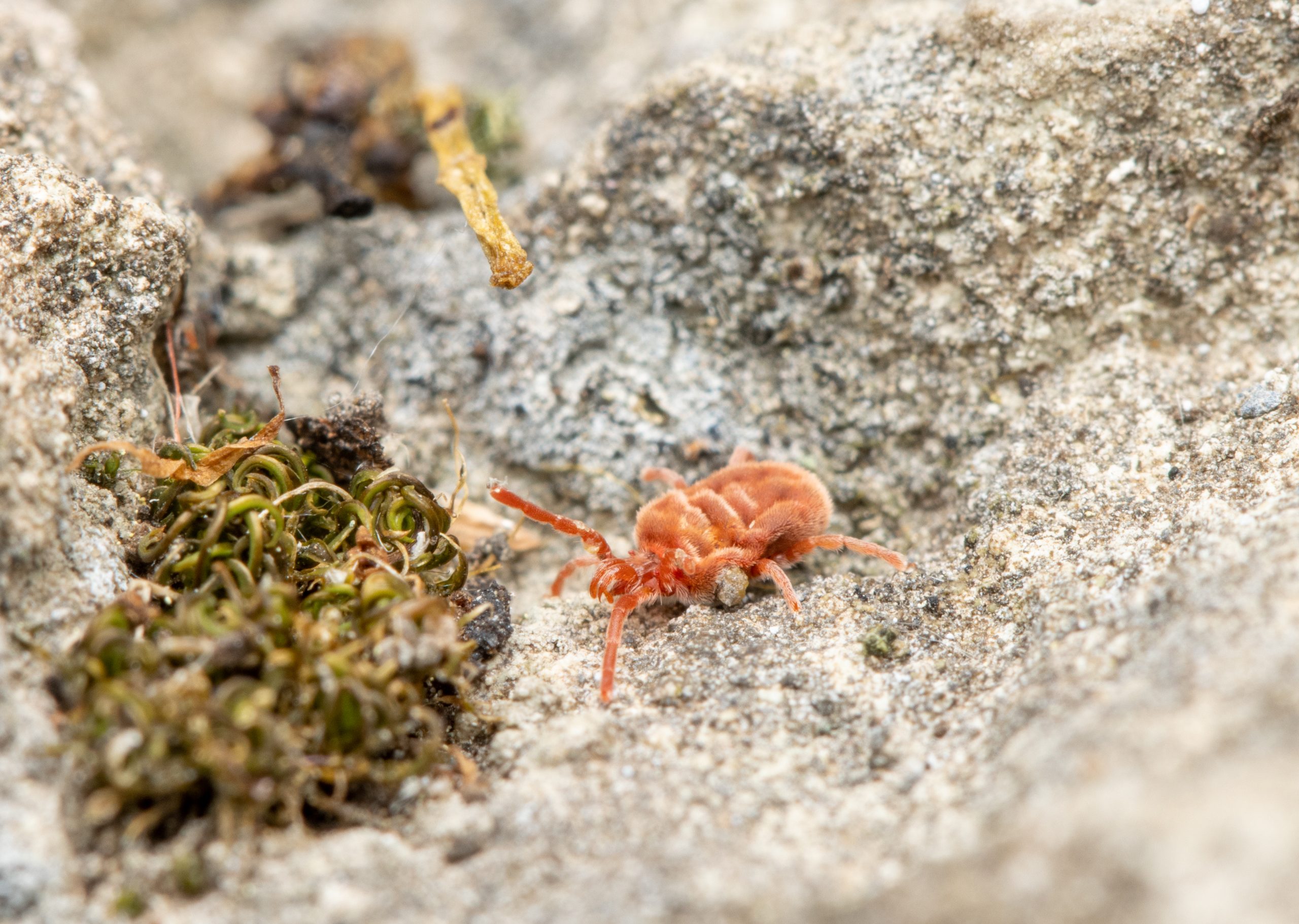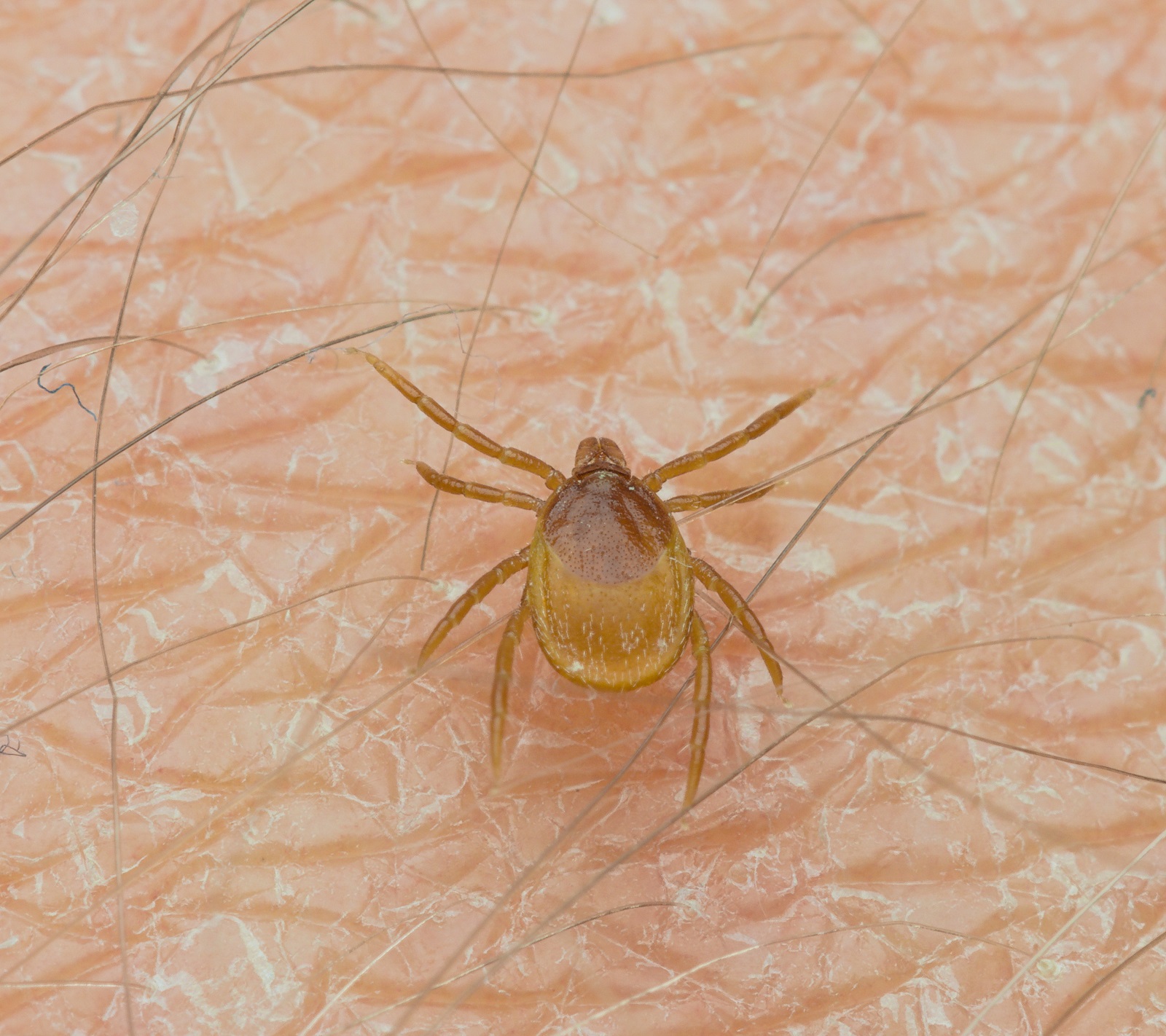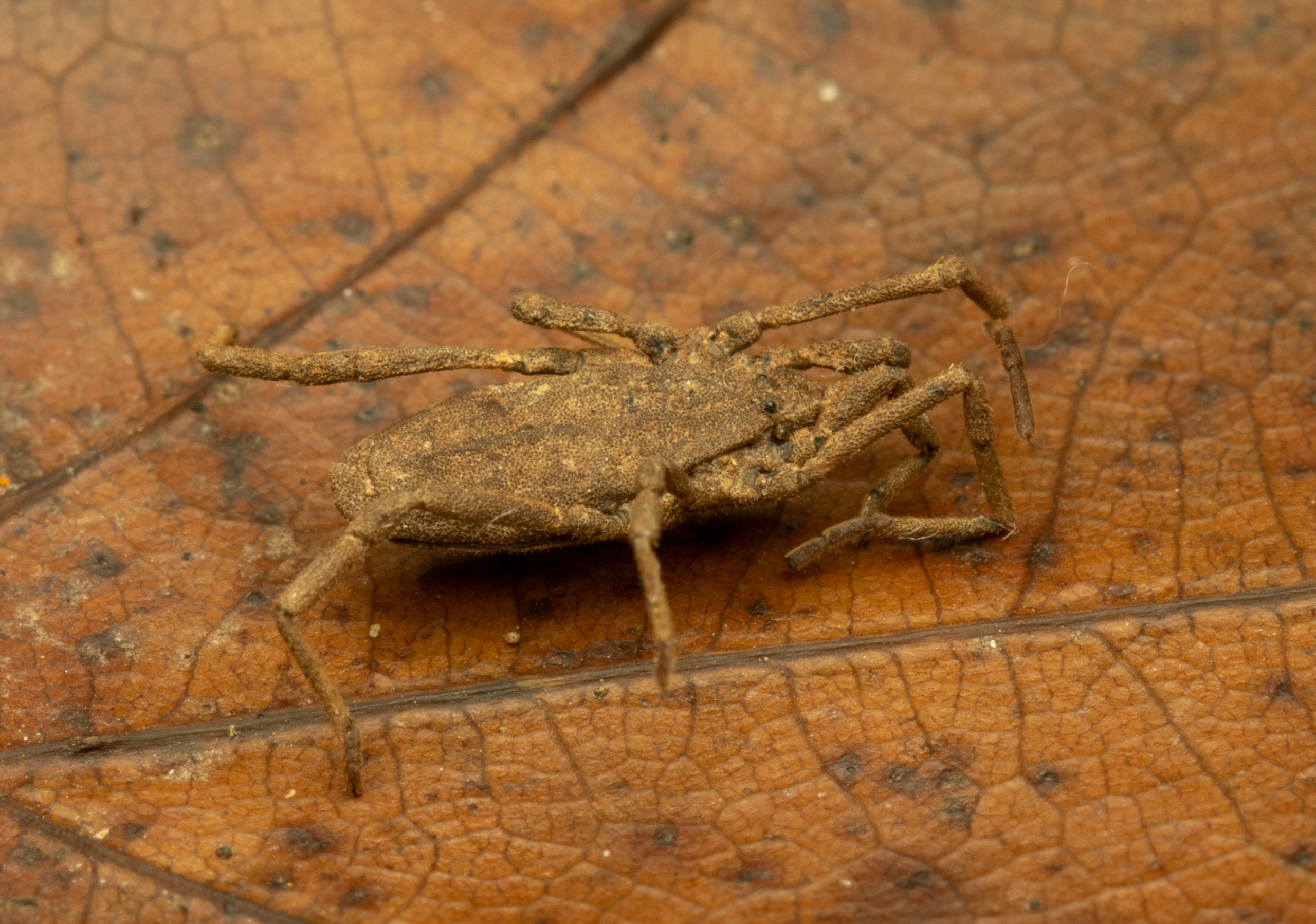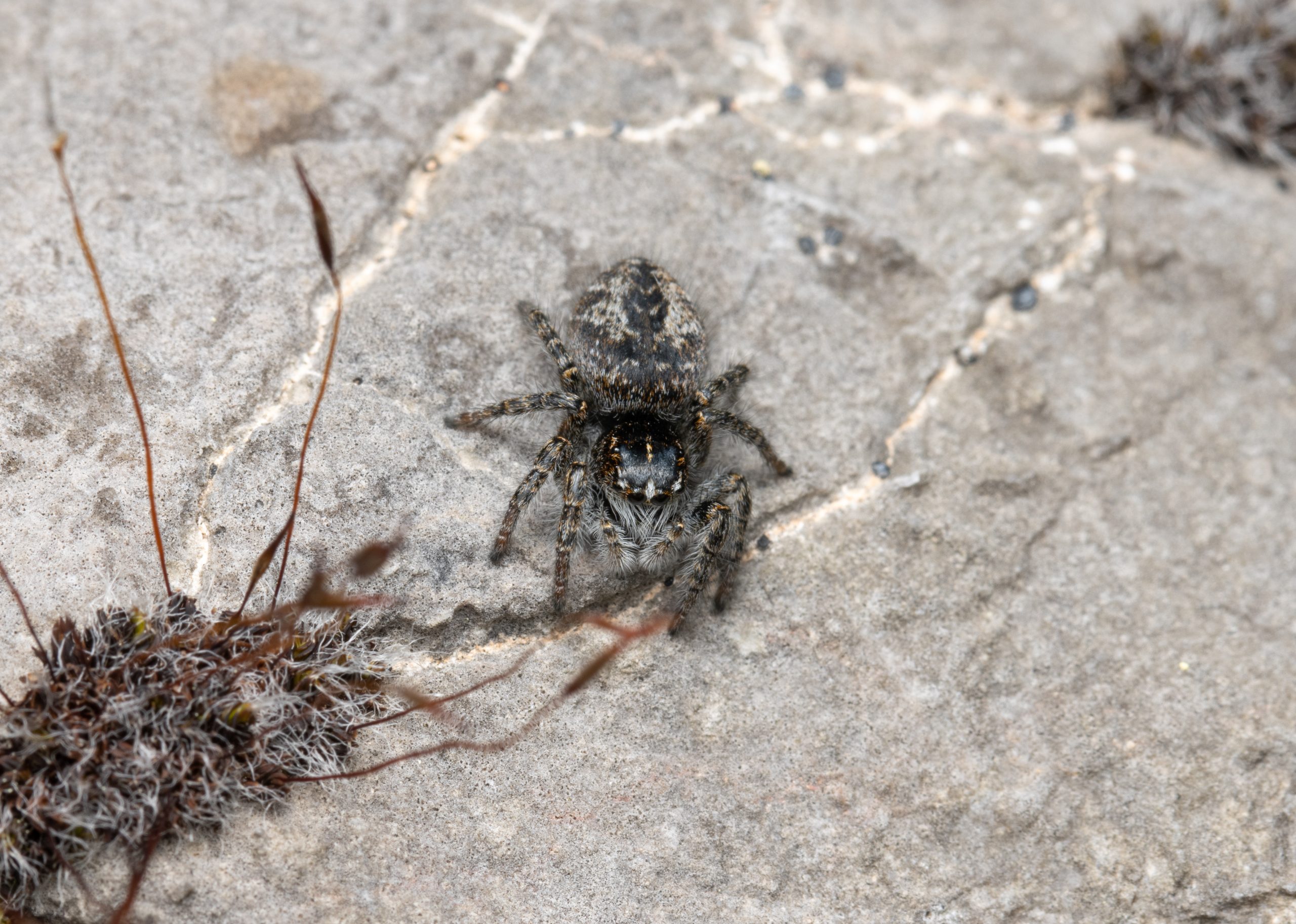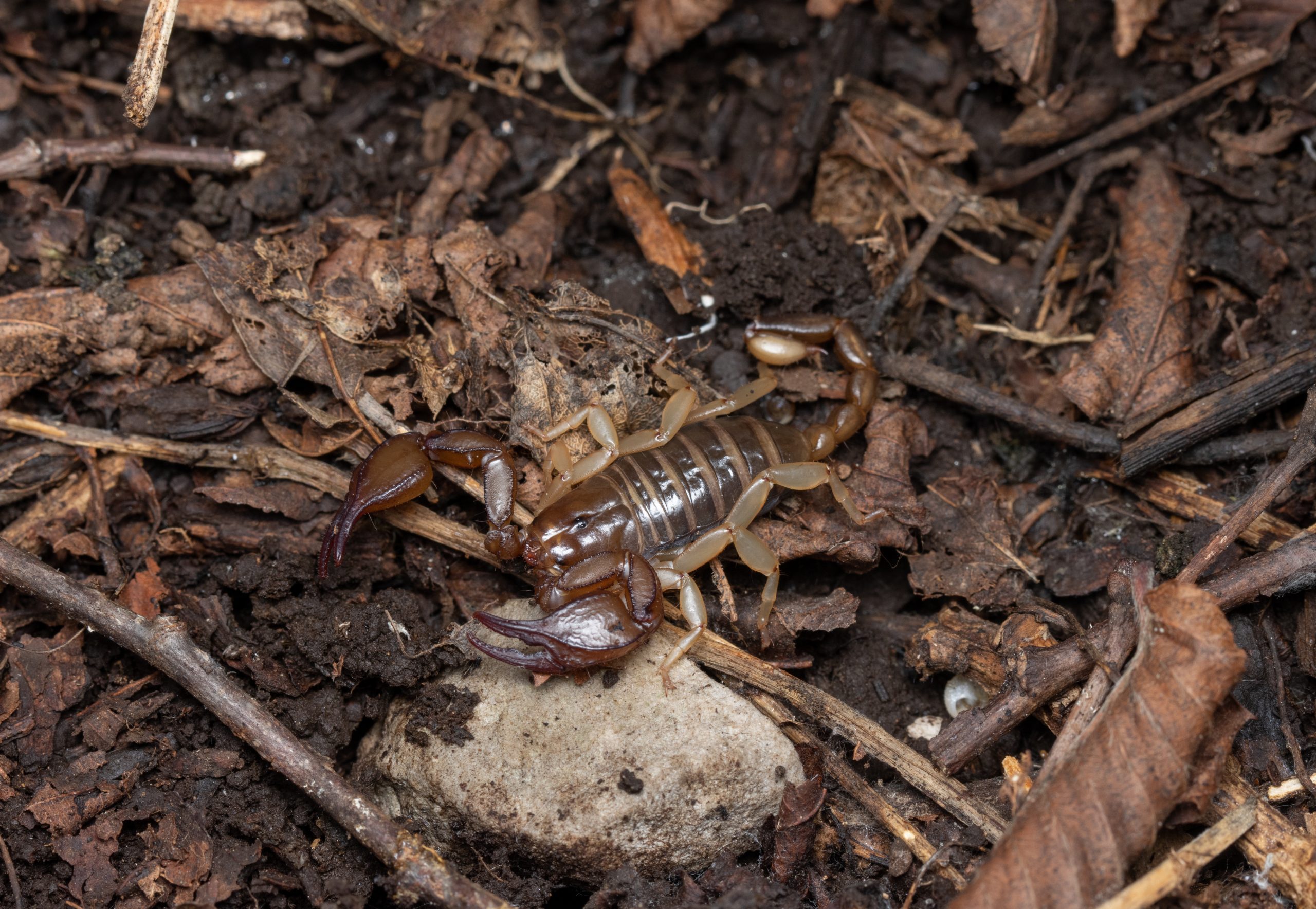- Chelicerata
Cyphophthalmi
The identifying characteristic of harvestmen is a broad connection between the cephalothorax (prosoma) and abdomen (opisthosoma), which together form a compact body of oval shape. The legs in harvestmen are generally exceptionally long and slender, however this is not a universal identifying character for the entire group. Some representatives are short-legged and one such group are mite harvestmen (Cyphophthalmi). The mite harvestmen are typically relatively small ranging from one to seven millimeters in length. Due to the small size and short legs, they superficially resemble mites.
The cephalothorax consists of six fused segments, which are dorsally covered by a uniform carapace. The cephalothorax bears six pairs of appendages. The first pair are chelate chelicerae, which are used to catch or gather food and pass it towards the mouth. At the base of the chelicerae, the food is masticated before it enters the mouth. The second pair of appendages are pedipalps which are modified as tactile organs. These are followed by four pairs of walking legs. On the dorsal side of prosoma, a pair of eyes is located, which can be located on a median projection of the prosoma. In mite harvestmen, a pair of cone-shaped tubercles containing the defense glands is located on the prosoma.
The abdomen is distinctly segmented, oval in shape and consists of ten segments. In mite harvestmen, the tergites of the first eight abdominal segments are fused with carapace into a solid plate, with borders between the tergites still distinctly visible. Openings of the tracheae which serve as respiratory organs and genital openings are located on the opisthosoma.
The mite harvestmen are distributed on all continents with the exception of Antarctica. They are commonly found in leaf litter and humus; some inhabit cave habitats. A common species in Slovenia and Croatia is Cyphophthalmus duricorius, which is distributed also in border areas of Austria and northeast Italy. It is commonly found in leaf litter and forest humus.
Harvestmen are generally predators that feed on gastropods and other arthropods. Some species feed also on carrion and decaying fruit. Their vision is relatively weak; thus, they rely primarily on chemo and mechanoreceptors located on their pedipalps and the first pair of legs. In contrast to spiders the harvestmen do not have venom glands and spinnerets. For the defense against predators, they use noxious secretions they emit from the cone-shaped tubercles or other defense glands on the prosoma.
More photos
More info
Related arthropods

Authors
- Urban Bogataj,
- Gregor Bračko,
- Teo Delič,
- Cene Fišer,
- Žiga Fišer,
- Rok Kostanjšek,
- Rudi Verovnik,
- Miloš Vittori,
- Valerija Zakšek.
Students Vito Ham, Vesna Jurjevič, Gaj Kušar, and Adrijan Samuel Stell Pičman also participated in the project.
